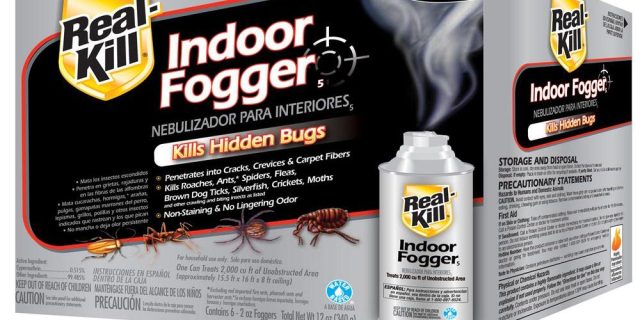17
Nov
Bill in New York Would Restrict Use of ‘Bug Bombs’ Statewide

(Beyond Pesticides, November 17, 2021) New York state senator Zellnor Myrie (D-NYC) introduced legislation this week that would restrict, and in certain cases ban the use of ‘bug bombs’ in the state. Total release foggers, more aptly referred to as bug bombs (because in some cases, they literally blow up), are dangerous indoor devices that release an aerosolized plume of toxic pesticides and unknown inert ingredients in an overpowered, ineffectual attempt to manage common pest problems. As Sen. Myrie notes in his legislative justification for the bill, “This is an environmental justice issue disproportionately affecting lower-income individuals, as bug bombs are a relatively inexpensive pest management solution. As a result, individuals living in older, larger multi-dwellings, who also suffer from adverse health outcomes like asthma at higher rates, are disproportionately exposed to the harmful effects of bug bombs.”
Senator Myrie’s legislation, S.7516, will allow only certified pesticide applicators to purchase and use the dangerous devices, and would completely ban their use in multi-unit dwellings. “Foggers should not be used in multi-dwelling buildings, but existing New York state law does not prohibit this use,” Sen Myrie continues in his legislative justification. “Restricting the sale of pesticide foggers to consumers, restricting their use in multi-dwelling buildings, or restricting the use to licensed pesticide applicators will reduce their use by ensuring they are applied only by personnel trained to understand and follow the restrictions and warnings on the product label and will result in better targeting when they are used.”
While eliminating consumer use by restricting the devices to certified pesticide applicators would be an important step forward, there is considerable evidence to justify an all-out ban that extends beyond multi-family units. Problems with these devices stretch far back. Reporting from the Centers for Disease Control and Prevention (CDC) cataloged over 450 bug bomb related illnesses between 2001-2006 in the United States. Many of these incidents occurred in New York City, leading the NYC Department of Health (DoH) in 2009 to petition the U.S. Environmental Protection Agency (EPA) to make these devices restricted use, as Sen Myrie’s legislation would accomplish. Around the same time that NYC DoH petitioned EPA, a 10-month old child died in South Carolina after their mother used bug bombs inside their home. At the time, Jay Feldman, executive director of Beyond Pesticides said, “This child’s death should move the leadership of EPA to take the necessary steps to ban foggers, an action that has been urged for years both within and outside the agency.”
Yet the agency ultimately sided with the device manufacturers, rejecting NYC DoH’s petition. EPA instead claimed that incidents were “overwhelmingly minor in nature,” resulting from “a few basic errors” and concluded that “label improvements can mitigate these risks.” EPA subsequently introduced new labels, this time with comic-book style pictures indicating the steps required to use the products.
Almost a decade later, in 2018, CDC officials published a new report on the revised labels, determining that EPA’s actions represented a public health failure. Between 2007-2015, CDC cataloged 3,222 illnesses caused by bug bomb use. This nearly 8-fold increase in reported incidents reveal that EPA’s new labels caused more problems and confusion than the previous labels already determined to be deficient. Within both cases, the main cause of poisoning was a failure to leave the premises. The CDC report also notes, “Some users ventilated treated premises for the recommended length of time or longer, but still became ill, suggesting that ventilation might be inadequate or the recommended period might be insufficient to fully eliminate TRF [total release fogger] residuals before occupancy.”
In addition to the inherent dangers of using these products is the fact that they do not work – at all, according to a 2019 study. “In a cost-benefit analysis, you’re getting all costs and no benefits,” said Zachary DeVries, PhD, co-author of the study. “Bug bombs are not killing cockroaches; they’re putting pesticides in places where the cockroaches aren’t; they’re not putting pesticides in places where cockroaches are and they’re increasing pesticide levels in the home.”
Although many common household pests, like cockroaches and bed bugs, have displayed widespread resistance to the insecticides primarily used in bug bombs – synthetic pyrethroids, it isn’t even this resistance that is the primary failure with bug bombs. These devices disburse pesticide residue throughout one’s home, but it often doesn’t make it into the cracks and crevices where pests hide. As a result, pesticide levels in one’s home can increase 600-fold – creating a long-term problem. With evidence that synthetic pyrethroids persist on indoor surfaces for over a year, bug bombs simply add insult to injury.
Beyond Pesticides’ ManageSafe webpage provides non-toxic or least-toxic methods to eliminate cockroaches, bed bugs, ants, and other household pests. The success of these methods highlight the unnecessary danger of keeping bug bombs on the market. New York residents are encouraged to write or call their state lawmakers in support of this legislation, and those outside of New York can contact their state elected officials and urge them to introduce a similar ban.
All unattributed positions and opinions in this piece are those of Beyond Pesticides.
Source: New York Senate S.7516, The Post-Journal
Image source: Homedepot.com










